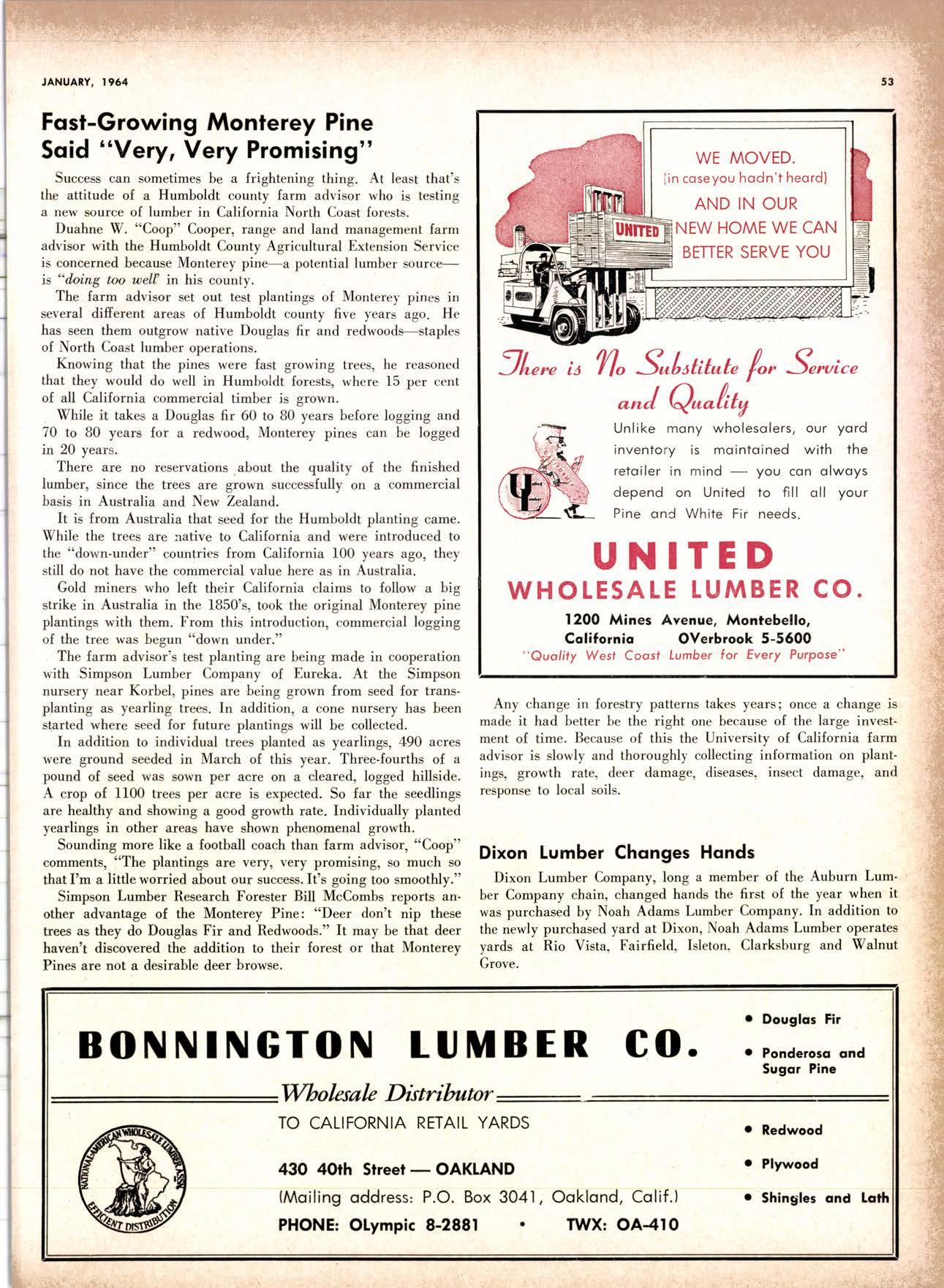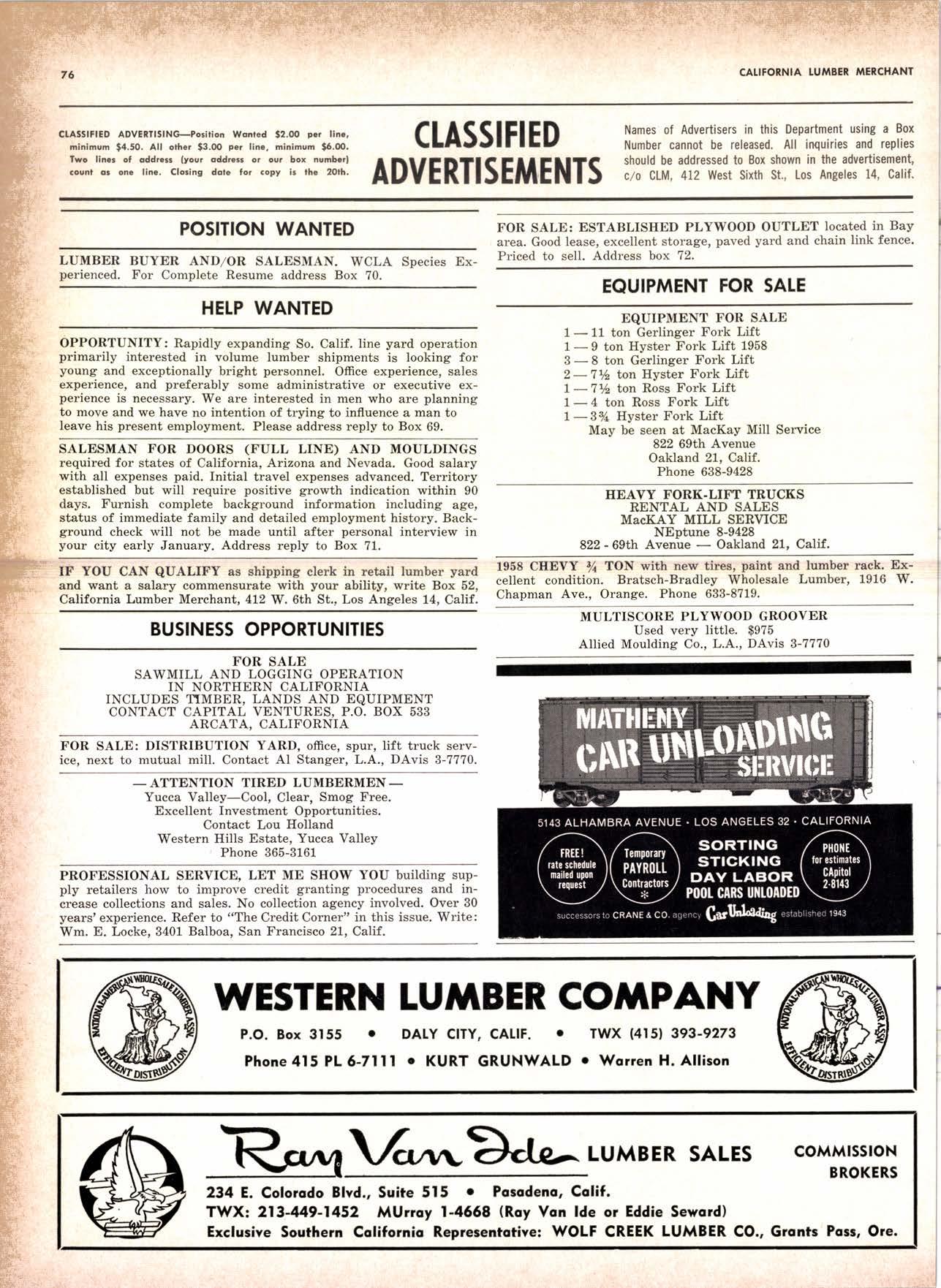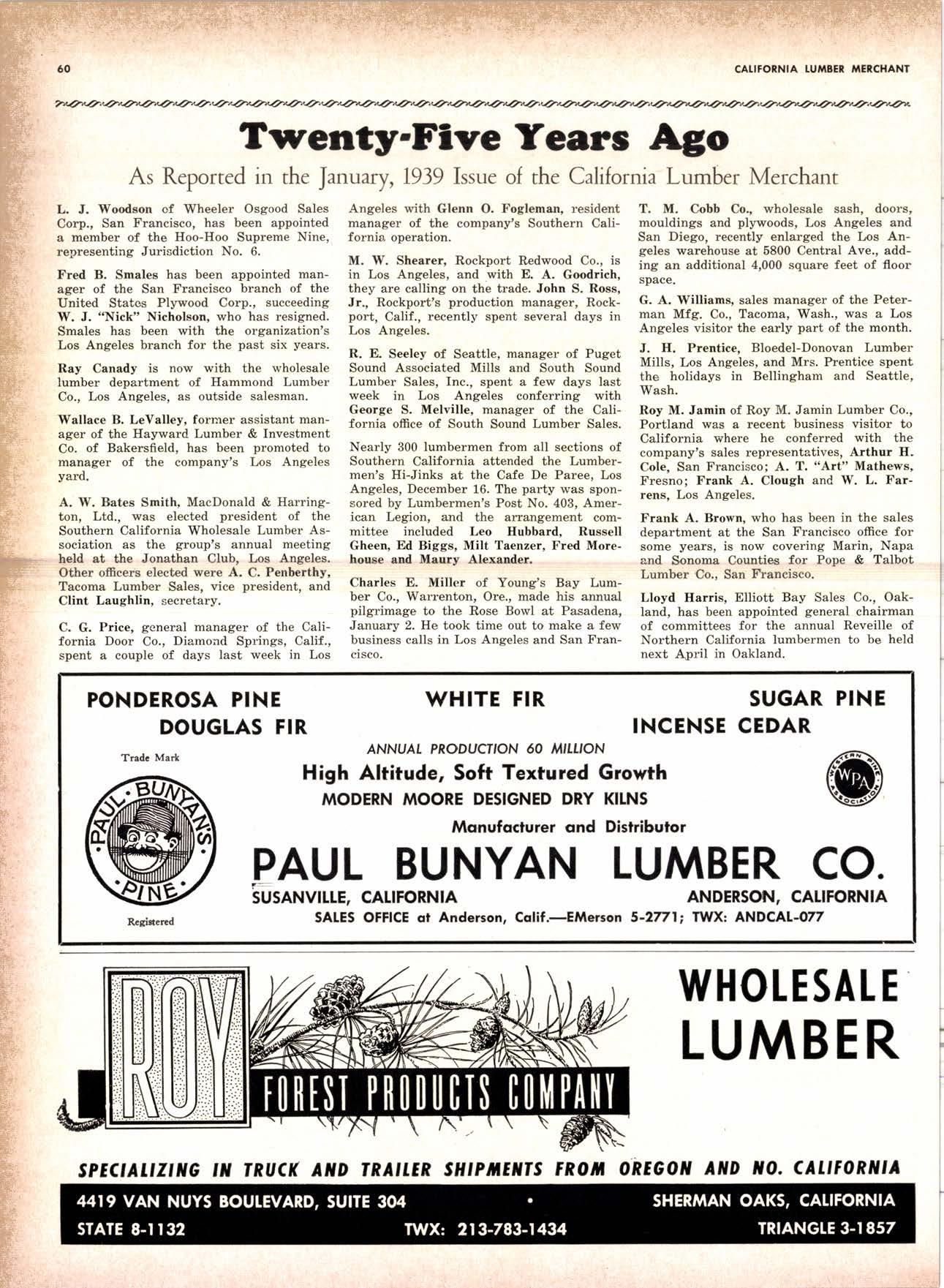
2 minute read
Fqst-Growing
Monterey Pine Sqid "Very, V"ry Promising"
Success can sometimes be a frightening thing. At least that's the attitude of a Humboldt county farm advisor who is testing a new source of lumber in California North Coast forests.
Duahne W. "Coop" Cooper, range and land management farm advisor with the Humboldt County Agricultural Extension Service is concerned because Monterey pine-a potential lumber sourceis "doing too well in his county.
The farm advisor set out test plantings of Monterey pines in several different areas of Humboldt county five years ago. He has seen them outgrow native Douglas fir and redwoods-staples oI North Coast lumber operations.
Knowing that the pines were fast growing trees, he reasoned that they would do well in Humboldt forests, where 15 per cent of all California commercial timber is grown.
While it takes a Douglas fir 60 to 80 years before logging and 70 to 80 years for a redwood, Monterey pines can be logged in 20 years.
There are no reservations .about the quality of the finished lumber, since the trees are grown successfully on a commercial basis in Australia and New Zealand,.
It is from Australia that seed for the Humboldt planting came. While the trees are native to California and were introduced to the 'odown-under" countries from California 100 years ago, they still do not have the commercial value here as in Australia.
Gold miners who left their California claims to follow a big strike in Australia in the 1850's, took the original Monterey pine plantings with them. From this introduction, commercial logging of the tree was begun "down under."
The farm advisor's test planting are being made in cooperation with Simpson Lumber Company of Eureka. At the Simpson nursery near Korbel, pines are ,being grown from seed for transplanting as yearling trees. In addition, a cone nursery has been started where seed for future plantings will be collected.
In addition to individual trees planted as yearlings, 490 acres were ground seeded in March of this year. Three-fourths of a pound of seed was sown per acre on a cleared, logged hillside. A crop of ll00 trees per acre is expected- So far the seedlings are healthy and showing a good growth rate. Individually planted yearlings in other areas have shown phenomenal growth.
Sounding more like a football coach than farm advisor, "Coop" comments, "The plantings are very, very promising, so much so that I'm a little worried about our success. [t's going too smoothly."
Simpson Lumber Research Forester Bill McCombs repoits an. other advantage of tlle Monterey Pine: "Deer don't nip these trees as they do Douglas Fir and Redwoods." It may be that deer haven't discovered the addition to their forest or that Monterey Pines are not a desirable deer browse.
WE MOVED. iin coseyou hodn't heord) AND IN OUR NEW HOME WE CAN BETTER SERVE YOU
JLn,nto Tl" S"kfttute fo, Sn*i,n anJ Q,*/ity
Unlike mony wholesolers, our yord inventory is mointoined with the retoiler in mindyou con olwoys depend on United tofilloll your Pine qnC White Fir needs.
UNITED WHOLESATE TUMBER CO.
1200 Mines Avenue, Montebello, Colifornio OVerbrook 5-5500 "Quoliry Wesl Coosl Lumber lor Every Purpose"
Any change in forestry patterns takes years; once a change is made it had better be the right one because of the large investment of time. Because of this the University of California farm advisor is slowly and thoroughly collecting information on plantings, growth rate, deer damage, diseases, insect damage, and response to local soils.
Dixon lumber Chonges Honds
Dixon Lumber Company, long a member of the Auburn Lum' ber Company chain, changed hands the first of the year when it was purchased by Noah Adams Lumber Company' In addition to the newly purchased yard at Dixon, Noah Adams Lumber operates yards at Rio Vista, Fairfield, Isleton, Clarksburg and Walnut Grove.










